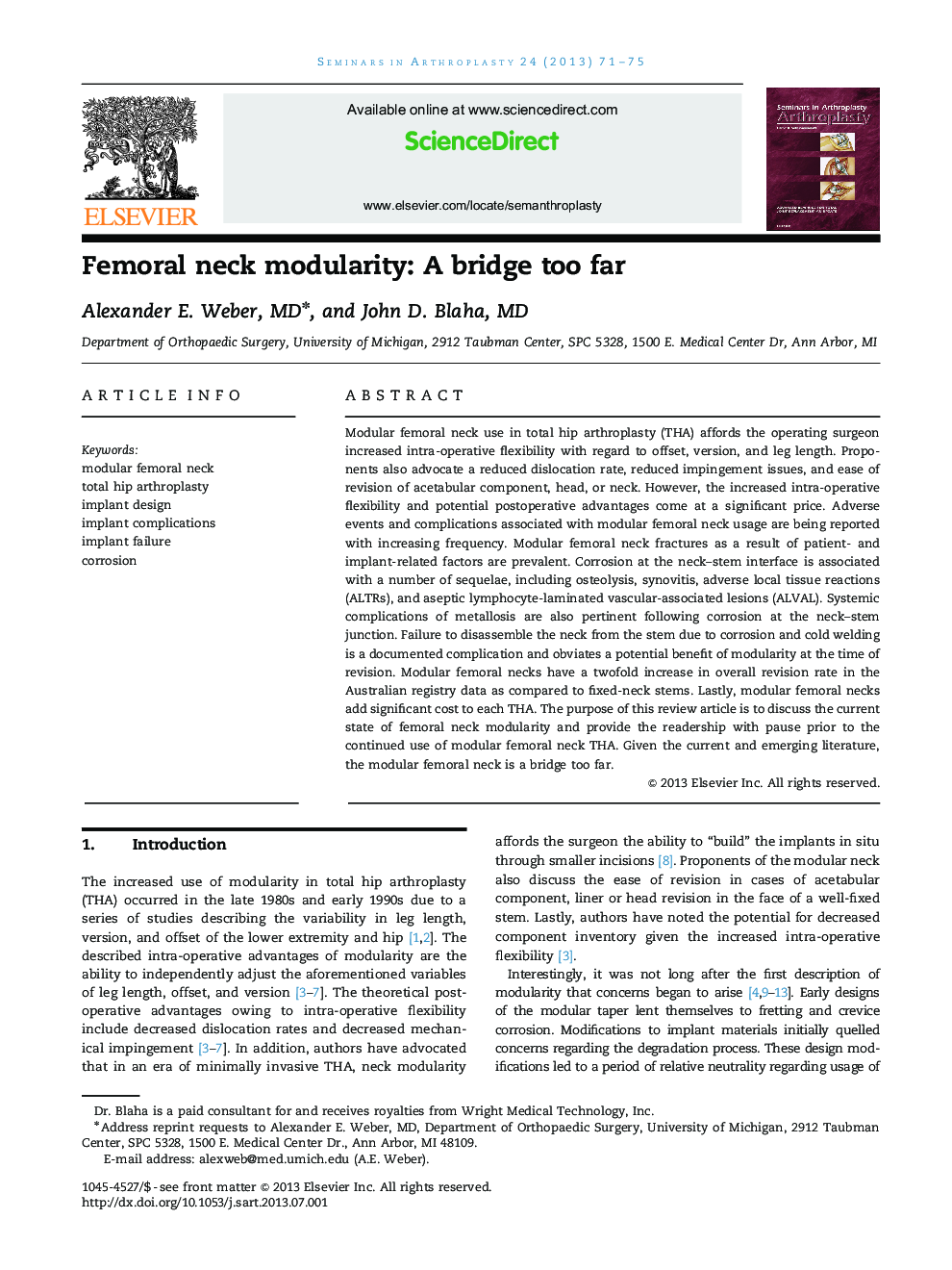| Article ID | Journal | Published Year | Pages | File Type |
|---|---|---|---|---|
| 4094090 | Seminars in Arthroplasty | 2013 | 5 Pages |
Modular femoral neck use in total hip arthroplasty (THA) affords the operating surgeon increased intra-operative flexibility with regard to offset, version, and leg length. Proponents also advocate a reduced dislocation rate, reduced impingement issues, and ease of revision of acetabular component, head, or neck. However, the increased intra-operative flexibility and potential postoperative advantages come at a significant price. Adverse events and complications associated with modular femoral neck usage are being reported with increasing frequency. Modular femoral neck fractures as a result of patient- and implant-related factors are prevalent. Corrosion at the neck–stem interface is associated with a number of sequelae, including osteolysis, synovitis, adverse local tissue reactions (ALTRs), and aseptic lymphocyte-laminated vascular-associated lesions (ALVAL). Systemic complications of metallosis are also pertinent following corrosion at the neck–stem junction. Failure to disassemble the neck from the stem due to corrosion and cold welding is a documented complication and obviates a potential benefit of modularity at the time of revision. Modular femoral necks have a twofold increase in overall revision rate in the Australian registry data as compared to fixed-neck stems. Lastly, modular femoral necks add significant cost to each THA. The purpose of this review article is to discuss the current state of femoral neck modularity and provide the readership with pause prior to the continued use of modular femoral neck THA. Given the current and emerging literature, the modular femoral neck is a bridge too far.
